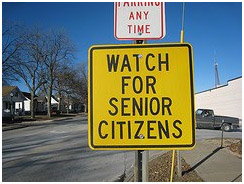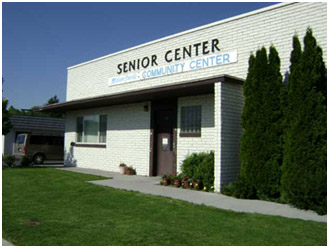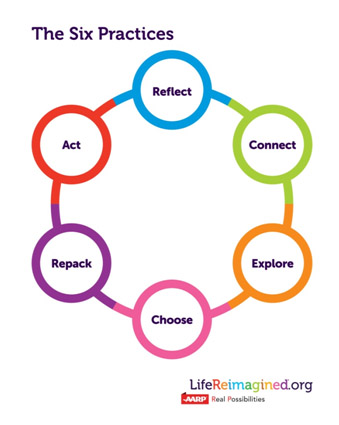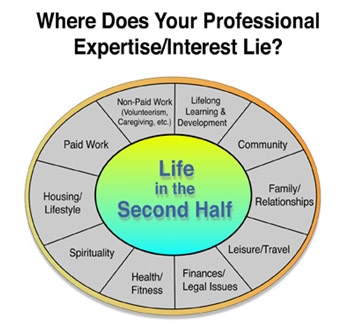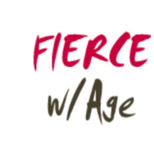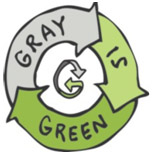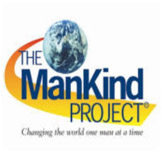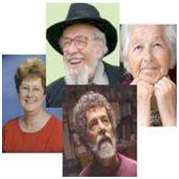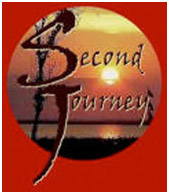By Vince Giuliano, Melody Winnig and Michael Giuliano
This blog entry is the third in a three-part series on the shifting narrative of aging. In Part 1 we started by laying out main issues confronting the world that are associated with increasingly aging populations. We did this by reviewing landmark UN and US government studies offering a global perspective on population aging. In Part 2 we list a number of the contrasting narratives related to aging which we believe to be in flux. In Part 3 here, we identify some of the major initiatives and activities that are reflecting and driving the changes in narratives. In all three blog entries we look at aging from individual and from social perspectives. We also surface some of the needs and requirements for the effective transformation of societies to ones in which people are living a lot longer.
Again, the main points we want to establish in this three-part series are:
- Because lifetimes are growing longer and longer as a significant worldwide trend, world populations are undergoing very significant shifts. For example, in the period from 1950 to 2050 the world population of people 65 and above is going up from 5% to 16% and during the same interval the population of people five and under is going down from 14% to 6% These shifts are laid out in important government and international agency reports which are summarized in Part 1.
- As a correlated worldwide trend many, of the key narratives related to aging are in transition, older ones fading away and being replaced by newer ones. These narratives are the stories out there in the culture that determine how we think about aging, how we make individual decisions about aging, and how laws and institutional structures treat aging. (In Part 2)
- In response to the changing realities connected with aging and the evolving narratives, powerful traditional organizations are adopting new initiatives and new programs, and many new organizations are being formed on every level from the highly local to the international to respond to the new narratives. That is the focus of this Part 3 blog entry.
- One narrative undergoing profound change is that retirement is an end-of-life event. The newer narrative is that retirement is a late midlife event with much possibly to follow. Powerful new initiatives are addressing the issue of how retiring seniors can effectively discover what they want to do next in life that is personally and socially useful, and effectively move into doing that. We discuss new services addressing this change in narrative here in Part 3.
- As a suggested simple update tp this original blog entry on 2/11/2021 is an article and YouTube video on the 60+me.com site 9 FUN PART-TIME JOBS FOR RETIREES THAT ANYONE CAN DO. This is on 60andme.com, an online magazine for “dynamic older women.”
One message from what you will read below is that three powerful new initiatives are addressing the issue of how retiring seniors can effectively discover what they want to do next in life and effectively move into doing that. The initiatives are LifeReimagined, a program of the AARP, and two newer ones Life Planning Network and ENCORE. With respect to the these, a 2013 story in USA TODAY telegraphs an important part of the picture: “The latest buzzwords for Baby Boomers are “reinvent,” “reimagine,” “encore” – anything that suggests a second chance or a new chapter. And because Boomers are such a huge market, all sorts of businesses, organizations, authors, life coaches, financial advisers and others are trying to serve the needs of this generation of an estimated 76 million to 79 million, many of whom bristle at the thought of slowing down. — Helping Boomers navigate the future is turning into a big business, spawning career websites such as Encore.org, and books including Second-Act Careers and Reboot Your Career. Life coaches and financial advisers offer more personalized attention, often with a hefty price tag. — But now, there’s a freebie: LifeReimagined.org, launching today by AARP, the non-profit advocacy group serving the over-50 set. The site is free to anyone who registers, not just AARP’s 37 million members. “It has an ageless feel to it, and that’s by design,” says Barbara Shipley, AARP senior vice president of brand. — The site offers goal-setting advice for careers, health and relationships; there’s also a private social network called Sounding Board. Organizers envision local events with face-to-face time among peers. Pilot events are planned in Arizona, California, Georgia and South Carolina. There’s also the online Life Reimagined Institute for Innovation, which could have a physical home by summer. LifeReimagined (characterized later in this blog) is the latest step for the AARP (formerly known as the American Association of Retired Persons) as it continues to rebrand itself and become the go-to address for feeling good about aging.”
I. TRADITIONAL RESOURCES FOR THE AGING
Advanced countries in the world have long had social resources in place to address some of the most pressing survival needs associated with end-of-life aging – health care, housing, home care, nursing care, transportation, provisions for the disabled, and the like. These have fostered the creation of important services, especially for providing for needs of the advanced aged – those 75 and beyond. Most of these initiatives were started 60 or more years ago at a time when the narratives of aging were traditional. The major player organizations in the US have made efforts to update their programs and activities to meet the needs of “Baby Boomers” who are today mostly in their late 60’s. In contrast to previous generations, Boomers by in large are still healthy, wish to remain active and fully participating and are not as focused on retirement. We review three of the most important aging-related resource organizations/movements in the USL the National Council on Aging, the Senior Center Network and the AARP, focusing particularly on how they are evolving to reflect the changing narratives on aging.
However, what we find exciting are the many new initiatives, both very local and global, that have sprung up in the past ten years to create communities, initiatives and buildings which reflect the new narratives on aging. These include ones focused on housing and design, educational opportunities, fashion, entrepreneurial support and many more.(You can review the sample of older and newer narratives which we offered in the Part 2 blog entry.) So, in Section II of this current blog entry, we move on to discuss some newer organizations that are responding to the newer narratives of aging – ones quite appropriate for out times.
The National Council on Aging (NCOA)
“The National Council on Aging (NCOA) was founded in 1950 as the first charitable organization in the U.S. that would provide a national voice for older Americans and act as their advocates in dealing with service providers and policymakers.[1] Headquartered in Washington, DC, NCOA brings together various organizations, businesses, and governmental organizations to work toward securing jobs, benefits, health, independent living, and active living among older Americans[2] (ref)”
“The National Council on Aging (NCOA) is the nation’s leading nonprofit service and advocacy organization representing older adults and the community organizations that serve them.”
“Our goal is to improve the health and economic security of 10 million older adults by 2020. For more than 60 years, NCOA has been a trusted voice and innovative problem-solver helping seniors navigate the challenges of aging in America. We work with local and national partners to give older adults tools and information to stay healthy and secure, and we advocate for programs and policies to improve the lives of all seniors, especially the most vulnerable.”
”The 2011 operating budget of NCOA and its affiliates was about $66 million USD.
One of the important newer initiatives of the NCOA is NCOA Social Enterprise, launched in 2013. “The mission of NCOA Social Enterprise is to help NCOA become an enduring organization and meet its goal of improving the health and economic security of 10 million older Americans by 2020. Using a social enterprise model, NCOA Services will partner with both for-profit and nonprofit entities to develop innovative solutions to the challenges facing an aging America, and bring those solutions to scale nationwide. “As public funding become less available, it’s imperative that nonprofits find additional resources to further their missions,” said James Firman, President and CEO of NCOA. “NCOA has a distinguished history of working with government, nonprofits, and the private sector. This new wholly owned subsidiary will capitalize on that history and seek new opportunities to enable seniors to be healthy and financially secure.” — “It is the right time for mission-driven for-profit and nonprofit organizations to join forces to improve important markets that serve older Americans and their families,” said Jay Greenberg, CEO of NCOA Services. “The premise of NCOA Services is that combining the DNA of the best of the private sector with the best of the voluntary sector will result in great value for older Americans and their families. We believe that this will result in a triple bottom-line: better services, greater profits for shareholders, and more resources for advocacy and service organizations. The wider adoption of social enterprise models has the potential to transform both sections for the good of all.”
NCOA has fostered or operates a number of special programs. An example is the Senior Community Service Employment Program (SCSEP). “For over 40 years, NCOA has operated SCSEP, which places mature workers in temporary paid community service jobs while training them for permanent employment. The program also provides job skills training and job placement assistance to low-income job seekers aged 55+. Participants train in a variety of occupations including customer service, office and computers, food service, and health care. NCOA currently operates 22 SCSEP projects in 11 states. SCSEP is funded by a grant from the U.S. Department of Labor (ref).”
Another example of NCOA initiatives is in the area of falls prevention. “One-third of Americans aged 65+ falls each year. Every 15 seconds, an older adult is treated in the emergency room for a fall; every 29 minutes, an older adult dies following a fall. Falls are the leading cause of fatal injury and the most common cause of nonfatal trauma-related hospital admissions among older adults. Falls result in more than 2.3 million injuries treated in emergency departments annually, including over 650,000 hospitalizations and more than 20,000 deaths. In 2000, the direct medical cost of fatal and nonfatal fall injuries totaled over $19 billion, $28.2 billion in 2010 dollars. The financial toll for older adult falls is expected to increase as the population ages and may reach $54.9 billion by 2020. — COA leads the Falls Free© Initiative, a national effort to address the growing public health issue of falls and fall-related injuries and deaths in older adults. The Initiative’s work includes: Falls Free© National Action Plan, Falls Free© Coalition and sponsoring (a group of over 70 national organizations charged with working toward the progress of one or more of the strategies in the National Action Plan). Members are engaged in disseminating proven falls prevention programs, advocating for funding, a 43-member State Coalition on Falls Prevention Workgroup charged with collaboratively promoting effective strategies to address falls. And finally, National Falls Prevention Awareness Day.” (ref)
The Senior Center Network
Senior Centers in the US provide very important social, educational and support resources for networks of seniors within local communities
The NCOA has been instrumental in fostering the senior center movement. From the National Council on Aging’s: Senior Centers: Fact Sheet:
“Recognized by the Older Americans Act (OAA) as a community focal point, senior centers have become one of the most widely used services among America’s older adults. Today, 11,400 senior centers serve more than 1 million older adults every day. Participants: Approximately 70% of senior center participants are women; half of them live alone. The majority are Caucasian, followed by African Americans, Hispanics, and Asians respectively. Compared with their peers, senior center participants have higher levels of health, social interaction, and life satisfaction and lower levels of income. The average age of participants is 75. 75% of participants visit their center 1 to 3 times per week. They spend an average of 3.3 hours per visit. Services: Senior centers serve as a gateway to the nation’s aging network—connecting older adults to vital community services that can help them stay healthy and independent. More than 60% of senior centers are designated focal points for delivery of OAA services—allowing older adults to access multiple services in one place. Senior centers offer a wide variety of programs and services, including: * Meal and nutrition programs. * Information and assistance. * Health, fitness, and wellness programs, * Transportation services, * Public benefits counseling, * Employment assistance, * Volunteer and civic engagement opportunities, * Social and recreational activities, * Educational and arts programs, * Intergenerational programs. To maintain operations, senior centers must leverage resources from a variety of sources. These include federal, state, and local governments; special events; public and private grants; businesses; bequests; participant contributions; in-kind donations; and volunteer hours. Most centers rely on 3 to 8 different funding sources. Impact: Research shows that older adults who participate in senior center programs can learn to manage and delay the onset of chronic disease and experience measurable improvements in their physical, social, spiritual, emotional, mental, and economic well-being. Today’s senior centers are reinventing themselves to meet the needs and desires of the aging baby boom generation. Boomers now constitute more than two-thirds of the 50+ population. Senior centers are developing new programs and opportunities for this dynamic generation of older adults.”
AARP as is an undisputed central advocacy organization for the elderly in the US, offering multiple programs and activities to help seniors. It functions both as a volunteer organization, as a political lobbying organization, and as a portal to a wide range of commercial services for seniors.
AARP is a US membership organization founded in 1958, now for people 50 and over. With its 37 million members, the organization has a great deal of political clout and is known for its advocacy for healthcare for the elderly and full preservation of Social Security benefits. It performs numerous other functions beyond its political ones, including offering a number of licensed commercial products and services under its name, and it publishes the magazine with largest circulation of any in the US.
“AARP is a nonprofit, nonpartisan organization, with a membership of more than 37 million, that helps people turn their goals and dreams into real possibilities, strengthens communities and fights for the issues that matter most to families such as healthcare, employment security and retirement planning. We advocate for consumers in the marketplace by selecting products and services of high quality and value to carry the AARP name as well as help our members obtain discounts on a wide range of products, travel, and services. — A trusted source for lifestyle tips, news and educational information, AARP produces AARP The Magazine, the world’s largest circulation magazine; AARP Bulletin; www. aarp.org; AARP TV & Radio; and AARP Books. AARP does not endorse candidates for public office or make contributions to political campaigns or candidates. — AARP Foundation is an affiliated charity that provides security, protection and empowerment to older persons in need with support from thousands of volunteers, donors and sponsors. AARP has staffed offices in all 50 states, the District of Columbia, Puerto Rico and the U.S. Virgin Islands.”
“AARP operates as a non-profit advocate for its members and as one of the most powerful lobbying groups in the United States. AARP has two affiliated organizations: AARP Services Inc. which is managed wholly for profit, and the AARP Foundation, a charity that operates on a non-profit basis.”
“AARP Services Inc. offers Medicare supplemental health insurance, discounts on prescription drugs and consumer goods, entertainment and travel packages, long-term care insurance and automobile, home and life insurance.[1] It provides quality control over the products and services made available by AARP-endorsed providers. According to AARP’s 2008 Consolidated financials, it was paid $652,000,000 in royalties from insurance companies that sold products referred by AARP. AARP also received an additional $120,000,000 for the advertisements placed in its publications.[2]”
The AARP Foundation’s website says the nonprofit “wants to win back opportunity for those now in crisis, so thousands of vulnerable low-income Americans 50+ can regain their foothold, continue to serve as anchors for their families and communities and ensure that their best life is still within reach.” Key areas of focus are hunger, income, housing and isolation. The Foundation’s vision is “a country that is free of poverty where no older person feels vulnerable.”(ref)”
A one-year membership in AARP costs only $16. The AARP magazine often features pictures and stories about healthy and active celebrity seniors taking exotic vacations, pursuing interesting careers, and doing sports. It speaks very strongly to the emerging narratives of aging as well as to the traditional ones.
We mention two particular programs of AARP that address a central issue of new narratives: the fact that many seniors who are retiring remain healthy, competent to work, and are questioning what the want to do next to keep themselves busy and contributing socially. Should a retiring individual find another job, start a business, go to school, do freelance work, engage in volunteer activities, or simply focus on the family? The decision can be very difficult.
Life Reimagined Institute
The Institute of the AARP offers tools and services to help seniors to reimagine and reinvent themselves. See this 2013 article from USA TODAY: AARP to coach aging Boomers ‘reimagining’ their lives. . And check out these inspiring Life Reimagined videos:
AARP – “Life Reimagined – Dan Marino”
A life reimagined in co is you you &lors – Barbara
The six key practice areas of the Life Reimagined Institute are illustrated in this diagram:
Create the Good
Another AARP program worth mentioning here is Create the Good, a web service that facilitates seniors deciding on whether they want to do volunteer work and then helps them explore various kinds of volunteer services and eventually connecting with them. It also helps nonprofits find senior volunteers. The site lists volunteering opportunities by local area, some event-based others ongoing. For example, there is a Walk for Hunger pre-Walk Sign Painting event March 1-22 in East Boston. Details and contact information is provided. Guide publications are provided for starting up 34 different kinds of projects such as Clean Up a River, Help Someone Get the Food They Need, How to Organize a Book Sale, and Build a Caring Community Network.
These traditional organizations play increasingly important roles in protecting the rights and prerogatives of vulnerable seniors in the face of government budget cuts.
From a website of the national Council on aging: “Debate over the federal budget deficit already has resulted in over $1.5 trillion in cuts to discretionary programs, including those of the Older Americans Act, Falls Prevention, Housing Counseling, Section 202 Housing for the Elderly, the Low-Income Home Energy Assistance Program (LIHEAP), Senior Corps, and the Social Services Block Grant (SSBG). — More cuts are looming and Medicare, Medicaid, and Social Security are still on the table. — Protecting Vulnerable Seniors: We believe that reducing the federal budget deficit is important to our nation’s economic future and will require difficult choices and shared sacrifice in spending reductions and increased revenues. But program cuts should not be made at the expense of economically disadvantaged seniors and younger Americans. Due to the recent economic downturn, more seniors than ever need assistance and support to make ends meet. Funding for seniors programs, including the OAA, is a cost-effective investment. Empowering seniors to remain healthy and economically secure in their own homes and communities reduces spending on more costly entitlement programs. Every $1 provided to the aging services network also is leveraged by nearly $3 in non-federal support. Cuts to Medicare, Medicaid, and Social Security that would increase out-of-pocket costs and reduce retirement income supports are something vulnerable seniors simply cannot afford.”
THERE ARE MANY OTHER TRADITIONAL MAJOR STAKEHOLDER ORGANIZATIONS CONCERNED WITH AGING
There are many additional well-established groups and organizations which are deeply concerned with aging populations. For example, a number of professional organizations are concerned with geriatrics and gerontology – health-reated professional practices in the support of older people, For example The American Geriatrics Society is a major association of geriatrics health services providers and the Gerontological Society of America is a society of professionals concerned with research related to aging.
On the business side there are many with vested interests traditionally related to aging populations, like nursing home and retirement community builders and operators. And many other traditional industries have key interests related to aging and longevity such as the life insurance, travel, finance, pharmaceutical and health care and medical device industries.
The interest in aging actually goes far beyond those, however. Businesses of many kinds are re-examining their mix of products and services to determine how best to service the emerging market of aging boomers. What kind of automobiles are likely to be valued? What kinds of clothing, beers, wines, soft drinks, beds, easy chairs, electronic devices, music, furniture, housing, and financial instruments are likely to be popular? What kinds of hotels and vacation packages are likely to be successful? What kinds of TV programming will be successful? What kinds of movies? What is the best way to reach this emerging market by advertising? How likely are seniors to go to traditional stores or shop online? What is the future of mega shopping malls, of big-store retailers? What will seniors want to do on their smartphones? Should some of them be redesigned with bigger buttons? What is the future of dentistry for seniors? We mention these commercial and professional interests because far more organizations are responding to and changing the newer narratives of aging than those covered in detail here.
Organizations responding to newer narratives and designed to empower people to make the best of their elder years are gaining in number and importance
Here is a sampler of newer and smaller new-narrative organizations that have been springing up. Some of these are national; others are small and local. Some have a spiritual bent; others are affiliated with health care organizations. This is by no means a complete list but should give an idea of the variety of things happening.
Life Planning Network (LPN).
This is a national membership organization with regional and large city chapters which organize conferences, workshops, podcasts and other activities. Its membership consists of professionals who can assist seniors in all the areas shown in this chart: Source: LPN
“LPN is a community of professionals and organizations from diverse disciplines dedicated to helping people navigate the second half of life. OUR MISSION To create and communicate knowledge and resources that support professionals in their work to enhance people’s later lives and thus benefit society. OUR VISION Intentional and holistic preparation for the complexities and possibilities of later life becomes a common practice, accessible to all. OUR VALUES Learning: We prize the power of knowledge, experience and innovation to improve performance, broaden outlook and achieve better outcomes. Thought leadership: As pioneers, we are committed to growing and evolving our own understanding of and contribution to the emerging field of integrative life planning. Collaboration: We share information liberally, welcome diverse perspectives, foster understanding and innovation, and promote joint projects within and across disciplines. Professionalism: We are ethical, hardworking and promote excellence in practice. Community: We are energized and bonded by our common values, by our work and by one another.”
LPN CORE BELIEFS
- “There is an emerging and rapidly growing field of knowledge about the second half of life that is changing expectations about aging and adult development. create value through continued productive work and other societal contributions.
- Cultural models for making the most of this life stage are not well established and the cost to society of inaction or lost opportunity can be high.
- Unique challenges, risks and opportunities are associated with the second half of life and they require fundamentally different responses than at other life stages.
- Intentional, iterative, and informed preparation enables people to take full advantage of this time of life.
- An integrative approach to second-half life planning recognizes the interrelationships among many life decisions, including financial, estate, health, housing, work, leisure, learning and legacy interests.
- Professionals working with older adults should possess a base knowledge of all life dimensions to enable referrals to other competent professionals who possess specialized expertise they do not.
- Preparation for the second half of life is of value to all people in or approaching this life stage, including all economic levels, and should be broadly available.”
ENCORE.ORG
The Encore organization is concerned with all aspects of empowering 78 million retiring or soon to retiring senior baby boomers discover what their next “act” in life should be and moving into that act. Encore is concerned with “investing in people over 60 who are changing the world.” One of its programs is sponsoring the Encore Purpose Prize given to seniors who have started new careers after the age of 55 that make a significant social difference. In 2013 they gave two prize awards of $100,000 each and five of $20,000, all on a highly competitive basis.
Encore sponsors the Encore Fellowship Program for temporarily placing qualified seniors where they can make a significant difference and perhaps launch new careers which benefit society. “Encore Fellowships are a bold and timely idea that wows us … the kind of innovative thinking that can transform lives and change our world.” (Fast Company). “Encore Fellowships are designed to deliver new sources of talent to organizations solving critical social problems. These paid, time-limited Fellowships match skilled, experienced professionals with social-purpose organizations in high-impact assignments. During the Fellowship period (typically six to 12 months, half to full time), the Fellows take on roles that bring significant, sustained impact to their host organizations. While they are working, the Fellows earn a stipend, learn about social-purpose work, and develop a new network of contacts and resources for the future. — Following an outstanding 2009 pilot, the program continues to expand dramatically. In 2014 alone, over 250 Encore Fellows in 35 metropolitan areas across the United States are working at nonprofits and public agencies, building their capacity to deliver on their missions. — The Encore Fellowships Network offers opportunities in programs in Arizona, California, Florida, New York, Oregon, New Mexico, Massachusetts, Washington, and Washington D.C. – all members of a collaborative network. Given the limited number of Fellowships available and the large number of applicants, the application and selection process is competitive for both Fellow and Work Host applicants.”
The Encore College Initiative “encourages colleges to create and promote educational pathways to encore careers. the project invests in innovation and encourages colleges and social sector employers to work together to unleash the potential of boomers as a new workforce for social change.”
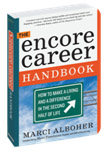 Encore publishes and sponsors books such as the Encore Career Handbook, “a comprehensive, nuts-and-bolts guide to finding passion, purpose and a paycheck in the second half of life. In it, you’ll find information about how to plan the transition. How much you need to make. The pros and cons of going back to school. When to volunteer, and when to intern. How to network effectively and harness the power of social media. Who’s hiring and for what jobs? Encore makes available aHot List of 35 viable careers.”
Encore publishes and sponsors books such as the Encore Career Handbook, “a comprehensive, nuts-and-bolts guide to finding passion, purpose and a paycheck in the second half of life. In it, you’ll find information about how to plan the transition. How much you need to make. The pros and cons of going back to school. When to volunteer, and when to intern. How to network effectively and harness the power of social media. Who’s hiring and for what jobs? Encore makes available aHot List of 35 viable careers.”
Discovering What’s Next
“(DWN) is a community-based nonprofit dedicated to engaging adults 50+ in the creative exploration of their next life stage. For those seeking to remain productive, contribute to their communities and maintain vibrant lifestyles, DWN offers information, inspiration and involvement. It serves communities in the greater Boston area and the surrounding region. — DWN is a network of people, programs and community partners. Volunteers and participants drive the topics addressed by programs, which range from encore careers to finding balance and fulfillment in the second half of life. DWN is a connector, identifying community resources for participants to benefit from. — Four program tracks consist of Work, Service, Balance and Realities (finances, health and other factors that mediate life decisions). Peer mentors, called Transition Navigators, offer one-on-one guidance to participants. Our resource center, called the DWN HUB, and website offer a place to find books, web links and other materials to support exploration and discovery. Programs include Transition Talks (open-agenda conversations on transition issues), MeetingUps (small-group meetings on a range of relevant topics), workshops and forums, author talks, and Ask the Expert sessions, in which participants get personal help with employment coaching, volunteer opportunities and social networking tools. Discovering What’s Next was founded in 2002 by Carol Greenfield in response to an outpouring of community interest. It began at the same time as the Life Planning Network and over the past eight years, the two organizations have worked together, both formally and informally, to support common goals.” DWN appears to be an ENCORE affiliate and it sponsors SOAR (Service Opportunities After Reaching 55) Contact: Devra Simon, Executive Director devsimon@comcast.net 617-467-5438 225 Nevada Street, Room 104 Newton, MA 20460 www.discoveringwhatsnext.com
Boomers and Beyond
This appears to be a LPN affiliate. There is a special interest group (SIG): “Interactive teleconference call: Meets on the first and third Tuesday of each month from 12:00 p.m. – 1:00 p.m. EST — The Boomers and Beyond SIG was founded in May, 2007 by Dorian Mintzer, Ph.D. It is an interdisciplinary special interest group for professionals who are either in the boomer and beyond age group themselves and/or work with clients in this age group. The intent is to bring together “kindred spirits” who want to explore together aspects of positive, creative and successful aging and how these issues relate to ourselves as well as application to our clients. — Relevant issues and/or books are discussed and frequently outside speakers make presentations as a “springboard” for the discussion. Participants are from around the country as well from Canada and Europe. The group is free, other than the cost of a telephone call. The calls are recorded, but active participation is encouraged. There is a Yahoo group that accompanies the SIG. — There is also a blog (www.boomersandbeyondblog.com) set up to be a discussion forum for some of the SIG topics. Over time the blog will be used to summarize SIG discussions. — SIG founder, Dori Mintzer is a member of LPN. Many of Boomer and Beyond SIG members are also LPN members. Membership in LPN is encouraged, but is not a requirement for involvement in the SIG. The Boomers and Beyond SIG has become a great way for many LPN members to stay connected through the conversations. LPN meetings and the Positive Aging Conferences also provides a great way for SIG members to meet in person.” Contact: Dorian Mintzer, Ph.D., dorian@dorianmintzer.com www.dorianmintzer.com
Association for Integrative Financial and Life Planning (AIFLP)
This organization too appears to be affiliated with LPN. “The Association for Integrative Financial and Life Planning is comprised of individuals who share a vision of a better kind of planning that encompasses both financial and non-financial issues in an integrated way. While we acknowledge that ideas along these lines have been in the air for some years now, and that progress has been made in some areas, we also perceive that much remains to be done, both in developing planning tools and methods that are comprehensive and integrated, and in promoting awareness and use of such tools and methods. — AIFLP is an informal voluntary association, with no membership fees, and was conceived in 2007 when a group of financial planners, life planners, academics, writers, trainers, financial product providers, software developers, and other interested parties, agreed on the need to advocate for more integrative (holistic) planning models and practices. Three years later, AIFLP has roughly 160 members across the United States and in several foreign countries. — AIFLP publishes The Integrative Adviser, a quarterly e-publication distributed free to members, which contains articles of both theoretical and practical interest, as well as a listing of recent publications and other resources of interest. — AIFLP operates as an organization complementary to and in cooperation with LPN. AIFLP has collaborated in the design of the LPN member database, and is currently completing a 16-month project in partnership with LPN developing a collaborative model for integrative (holistic) advising.” Contact: Chuck Yanikoski 978-456-7971 csy@StillRiverRetire.com www.AIFLP.org
Conscious Aging Alliance
Many organizations are based on bringing forward the wisdom often associated with aging, aging and spirituality, values from many native and non-Western cultures associated with respecting elders, the roles of aging in the natural world. Others may have a specialized focus, such as mobilizing elders for preservation of the ecology. A common theme among these and other organizations is bringing consciousness to aging. Some of these organizations can be found in the Conscious Aging Alliance.
“The Sage-ing Guild, launched in 1995 following publication of Reb Zalman’s book, From Ageing to Sage-ing, envisioned an alliance of like-minded organizations. It began investigating the work of various organizations, and extended invitations to those whose missions resonated with that of the Guild. Within a few months, the Conscious Aging Alliance was a reality. — The Conscious Aging Alliance is comprised of several organizations, including the Life Planning Network, that are making a positive contribution to a new vision of aging. Information about each of these organizations is below: Click here to see the Alliance’s schedule of upcoming events and services provided.”
Click here to see all of the organizations in the Alliance. Below, we provide truncated descriptions of some of these Alliance organizations from the Alliance website. We do this not because any of these organizations are necessarily “mainstream.” Some are not. But rather, we wish to illustrate the wide diversity of organizations fostering new and alternative narratives of aging:
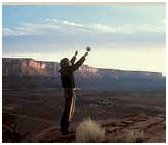 The Center for Conscious Eldering
The Center for Conscious Eldering
“The Center for Conscious Eldering, based in Durango, Colorado, is dedicated to supporting the development of conscious elders. We do this by offering our signature Choosing Conscious Elderhood rite of passage retreats, introductory workshops by invitation from churches, retreat centers and other groups, Coaching for Conscious Living and Meeting Ancient Wisdom pilgrimages to meet indigenous elders. We serve those in and approaching the elder third of life who seek passion, purpose, growth and service as they age. — An important aspect of our uniqueness is that we use the power of nature to support your growth as an elder.” by Beyond Words in 2014. Website: www.centerforconsciouseldering.com Contact: Ron Pevny, Founder and Director ron@centerforconsciouseldering.com
“The Online Digest of Boomer Wisdom, Inspiration and Spirituality is a free digest featuring daily and bi-weekly summaries and excerpts of the best writing about spirituality and aging for Boomers on the web. The Digest recognizes the boom in quality aging and spirituality content for, by and about the Boomer generation.” Website: www.fiercewithage.com Contact: Carol Osborne, Editor-in-Chief carol@fiercewithage.com
“Gray Is Green is a national non-profit focused on the possibility for older adult Americans to offer distinctive benefits to our society in response to unprecedented ecological challenges. These benefits may range from block-votes for a variety of policy changes to mass market demands for sustainable living choices in housing, food, transportation, healthcare and urban design. Gray-Greens possess unique gifts for adaptive response. — Such include a wealth of generational responses to war, economic collapse, epidemics, and political upheaval, together with individual responses to parenting, managing businesses, leading organizations, voting, volunteering, meeting worklife challenges, enjoying the wonders of nature and culture, and more.”. All are invited to sign up at http://grayisgreen.org for our periodic email updates and news items for sustainable living and environmental advocacy. The site also offers unrestricted access to our archive of information resources and a link for donors. Website:www.grayisgreen.org Contact:kathschomaker@grayisgreen.org
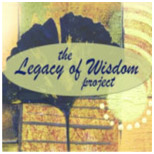 Legacy of Wisdom
Legacy of Wisdom
The Legacy of Wisdom project is dedicated to creating a vision of “wise living and aging.” It’s founding was generated through the work of Ram Dass, Rabbi Zalman Schachter, Jay Goldfarb, Tom Valente and Roshi Joan Halifax. Other supporters have been Mary Catherine Bateson, Bob Atchley, Rick Moody, Al Kaszniak and others. — A growing library (200+) of “video answers to key questions” from some of our most respected generation leaders is available in our archive library. We keep it simple to provide an easier avenue for understanding, limiting interviews to just 22 questions in five main areas of aging: Mission and Fulfillment; Aging Lifestyles and Relationships; Health and Healthcare; Legal and Finances; End of Life Preparations. Legacy of Wisdom also publishes its findings from conferences and workshops with inspiring elders which we sponsor.” Website: www.legacyofwisdom.org Contact: wisdom@legacyofwisdom.org
“The Elder Body of the ManKind Project (MKP) is made up of hundreds of members over age fifty who have formally declared themselves as elders. The mission of the elder body is “To awaken and nurture intentional eldering by teaching and mentoring.” When a member becomes a “declared elder” he is announcing to the community that he is living the second half of life intentionally. We believe that this intention includes being a source of blessing, an advocate for Earth, a mentor and a wisdomkeeper.”
For many years I (Vince) participated in the work of the Mankind Project, and believe I benefitted from it significantly. In particular, eight years ago participation in weekly “I Group” meetings sponsored by the project lent me strong support in the process of deciding in my late 70s to enter into a challenging new life career as a longevity scientist.
“The manner in which the elder body of MKP accomplishes its mission is through four practices:
- Certified ritual elders guide a circle of elders at each new member initiation weekend in creating an maintaining a sacred container for the weekend processes led by other men we call “leaders.”
- Once a man joins he is encouraged to join a support group. There are hundreds meeting all over the world. Some are made up entirely of elders and most have a elder or two as members.
- In each of our regions (Canada, USA, Germany, France, UK, South Africa, New Zealand, and Australia) annual conferences are held by the elders which we call Gatherings.
- Individual elders do personal work by taking classes based on a seven stage life path we call the Elder Journey.
Website: www.elders.mkp.org Contact: jimhoward12@gmail.com
Memorial BrainWorks is a department within Memorial Hospital of South Bend, Indiana, and an affiliate of Beacon Health System. Our philosophy is that brain health is the single most determining factor in how we live. The quality of how our mind functions drives the ability to remember, learn, relate, think, experience, contribute and enjoy life like we want today and for all of our tomorrows. Making brain-healthy lifestyle choices is an investment in long-term mind and body resilience. Website:www.memorialbrainworks.com Contact:brainworks@memorialsb.org 574-647-6628
The National Center for Creative Aging
“(NCCA) was founded in 2001 and is dedicated to fostering an understanding of the vital relationship between creative expression and healthy aging and to developing programs that build on this understanding. The process of aging is a profound experience marked by increasing physical and emotional change and a heightened search for meaning and purpose.” Website: www.creativeaging.org Contact: ghanna@creativeaging.org
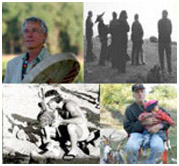 Recognition Rites for a New Vision of Aging
Recognition Rites for a New Vision of Aging
“Recognition Rites is a program founded by Dr. Tom Pinkson that shifts attitudes about aging and older people to the position of respect and reverence that mature cultures demonstrate with their valuation and socially integrative use of their elders. It offers a unique blend of ancient and contemporary knowledge that is the result of Dr. Tom Pinkson’s forty years of work bridging cultures, traditions, belief systems and peoples. Recognition Rites offers hope and a call to action, in a most timely and necessary manner. Recognition Rites bring people of diverse background and belief systems together for an event that helps break down barriers of separation between races, ages, religions and social class. They build community. They foster greater appreciation of diversity, of older people, of how love and appreciation enrich all our lives. Recognition Rites serve as a seed and stimulus for others in attendance to create celebrations for meaningful elders in their own lives.” Website: www.drtompinkson.com Contact: Dr. Tom Pinkson, tompinkson@gmail.com
“Sage-ing International is an organization with the mission of helping to change our society’s current belief system from aging to sage-ing – that is, from simply becoming old to aging consciously. We believe that the wisdom and gifts of conscious elders is urgently needed in today’s world, and sage-ing supports the development of such elders. Sage-ing is both a philosophy and a set of psychological and spiritual practices, originally developed by Zalman Schachter Shalomi, that support living with passion, purpose, inner growth and commitment to service as we age.” — We train and support a network of Sage-ing Leaders who transmit the wisdom of sage-ing through workshops, elder circles, and other educational and personal growth programs. Through our website, we offer a free six-month Associate Membership which provides access to valuable resources for individuals wanting to do their own conscious aging work while encouraging others to do likewise. We also conduct a robust public education program using a wide variety of social media, and are committed to collaborating with other like-minded organizations. Website: www.sage-ing.org Contact: info@sage-ing.org
“Second Journey is among a small number of emerging social-change organizations helping birth a new vision of the rich possibilities of later life, to open new avenues for individual growth and spiritual deepening to birth a renewed ethic of service and mentoring in later life.
- to create new model communities and new models OF community – for later life, and
- to marshal the distilled wisdom and experience of elders to address the converging crises of our time
Captured in the shorthand of our logo…Mindfulness, Service and Community in the Second Half of Life. We pursue this mission through publications, including our quarterly newsletter, Itineraries, and occasional book releases; through workshops and Visioning Councils with their focus on the challenges of Creating Community in Later Life; and through the rich resources “on our web site. Website: www.secondjourney.org Contact: SecondJourney@frontier.com
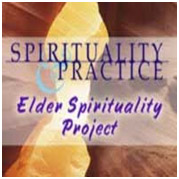 Elder Spirituality Project of Spirituality & Practice
Elder Spirituality Project of Spirituality & Practice
The Elder Spirituality Project of Spirituality & Practice provides resources for elders’ spiritual journeys through SpiritualityandPractice.com, a multifaith website with a large wisdom archive containing articles on spiritual practices; book, film, and audio reviews; book excerpts; profiles of spiritual teachers; small group programs; collections of quotations, and more. The Project launched in 2013 with a series of interactive e-courses led by spiritual teachers known for their insights into the spiritual blessings and challenges of later life. To keep the e-courses affordable and easily accessible, they are delivered by email. Participants then create virtual communities in the online “Practice Circles” where they share their experiences.” www.SpiritualityandPractice.com/ElderSpirituality Contact: Brussat@SpiritualityandPractice.com
There is a great deal more that can be said about the issues raised in these three blog entries, and there are many more organizations and societal developments than we could begin to cover here. You can expect additional blog entries related to these the near future.

